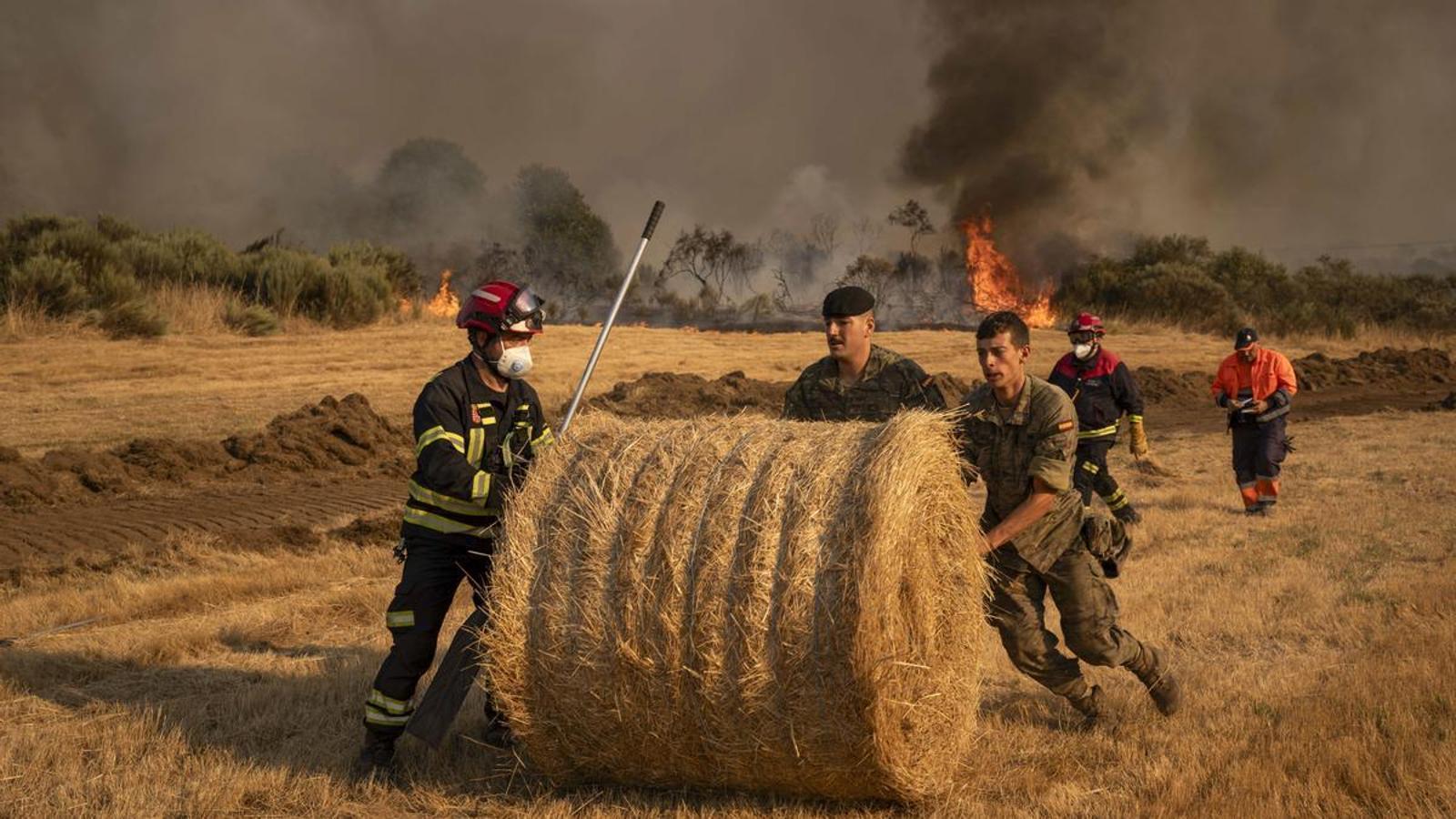Spanish President Pedro Sánchez proposed this Friday that the next conference of presidents, scheduled to take place before the end of the year in Asturias, address a possible state pact against the climate emergency that would help prevent wildfires like those this summer. Speaking to the media from the Degaña Advanced Command Center, he stated that this meeting should serve to "define and implement prevention, response, and reconstruction policies when calamities occur." Furthermore, the Spanish government will create an inter-ministerial commission led by the Minister of Ecological Transition, Sara Aagesen, to prepare the state pact.
Conditions are improving for combating the twenty or so active fires in Spain: could such a serious incident have been avoided?
The fires on the Peninsula show that the abandonment of forests is a great danger.


BarcelonaThe rain and the forecast of improved weather conditions allow us to be, for the first time, optimistic and to begin to see light at the end of the long tunnel of the last two weeks, in which 350,000 hectares have already burned in the northwest of the Peninsula. The Jarilla fire (Cáceres), the largest in recent history in Extremadura, has stabilized after eleven days of activity, and the Picos de Europa and several outbreaks in Ourense have also been brought under control. However, there are still nearly twenty active fires that prevent emergency teams from lowering their guard, much less declaring victory: in Galicia, new outbreaks have been declared in Pontevedra and Lugo, and in Castilla y León, the fires in the El Bierzo region are worrying due to the wind and the complicated .
The simultaneous occurrence of forest fires for so many days in a row is complicating the work of the Firefighters and the UME military unit. The capacity of these forces has been overwhelmed by the virulence of the flames, which have been fueled by the fatal combination of abnormally high temperatures and low humidity.accumulation of forest mass that ends up converted into fuel. In total, the fires have already scorched more than 400,000 hectares, the largest area burned since the beginning of the century.
Juan Picos, professor of forestry engineering at the University of Vigo, warns that preventing fires is practically impossible, although much more can be done to make the blazes easier and faster to combat. In this regard, he warns that the current means of fighting fires are sufficiently good and efficient, so he predicts that "no major technological breakthroughs are expected." This is by no means a sign of complacency; rather, we must invest in greater prevention to save budgets for firefighting. The EU estimates that every euro invested in prevention saves between four and seven euros of damage.
The environmental crisis is concentrated in the northwest of the Peninsula, between Portugal and the communities of Galicia, Castile and León and Extremadura and responds, according to experts, to the calls sixth generation fires which have been worrying emergency teams for years due to the difficulty of controlling and extinguishing them, despite the dedication of numerous material and personnel resources, because they advance with enormous speed and even create their own meteorological islands.
Although the current affected area is part of the so-called cleared Spain due to constant depopulation, for the specialist, pointing out this trend is a mistake because large fires also occur near overpopulated cities like Los Angeles. Hawaii, California, Australia, Valparaíso, or the latest major fire in Els Ports, in the Baix Ebre. All of these are major fires that are experiencing distinct behavior, characteristic of the global climate emergency. In any case, these new fires share "patterns" that reflect "two inertias": that of climate change and that of "decades of abandoned activities" in forests and fields, resulting in more forest biomass today than ever before.
Sustainable management in depopulated Spain
From Zamora, Olga González Raposo, manager of the Federation of Forestry Associations of Castilla y León (FAFCyL, in Spanish), explains that the smoke from fires burning miles awayThe organization represents 50,000 forest owners totaling half a million hectares and works to promote a "forest culture" for "sustainable management." In recent decades, the Castilian-Leonese region has lost population and, at the same time, land worked by farmers, ranchers, and the timber industry, which helps clear the fields.
"We find that we are unable to manage such a large amount of forest," especially because it is a region with small municipalities and owners, explains González Raposo, noting that unmanaged fields pose a "huge risk." Despite aid from the Regional Government of Castile and León, González asserts that it is insufficient, and therefore calls for a focus on introducing a "new forest governance" that would provide more management support or implement initiatives such as professionalized herds, as is done in Catalonia.
Aware that they won't get ahead on their own because forest exploitation is currently economically unprofitable, the FAFCyL also proposes tax incentives or payments for ecosystem services to offset the costs of those left to defend and work the land. "We must understand that a catastrophe like the fires triggers a chain of losses of wildlife, water quality, air quality, ecosystems, and work activities, in addition to possible human lives and homes," it emphasizes.
In light of these proposals, Professor Picos points out that prevention should not focus solely on keeping fields clear of excess biomass. He affirms that we must move toward "structural prevention," in which awareness should be raised "from the lowest citizen to the highest official," without forgetting the power of "good consumer decisions." How is this put into practice? For example, by choosing to buy zero-mile products that help farmers and ranchers stay in their communities and contribute to making their business profitable. "As a society, we can't continue asking firefighters to go to battlefields and risk their lives; instead, we must provide them with the conditions to win," he explains.
